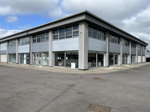However, there has traditionally been a nagging doubt whether these components have the precise fit and finish to compete with OE products.
Since the European Commission revised the motor trade’s Block Exemption Regulation in 2002, Tier One component suppliers have been allowed to supply the same parts used in carmakers’ production lines directly to the aftermarket. It also allows workshops to reduce costs by using matching quality parts for servicing and repairs without fear of invalidating a vehicle’s warranty.
This is designed to put the aftermarket sector in greater competition with carmakers, who traditionally had a monopoly on the replacement parts sector. However, the expected flood of competition for repairers’ business has been little more than a trickle. Usage of non-OE body panels in the UK’s crash repair industry stands at around 10%.
Thatcham, the Motor Insurance Repair Research Centre, introduced an accreditation mark for the production and supply of non-OE parts in 2002. In the five years since, it has granted accreditation to a total of 280 components, covering 100 models.
“There is now coverage for vehicles under three years old as the Block Exemption Regulation has allowance for the use of matching quality parts without affecting warranties on vehicles of any age,” explains Dean Lander, accreditation manager at Thatcham.
Suppliers include Phira Componentes Automocion of Spain, Tong Yang Industry Co of Taiwan and Gordon Auto Body Parts Co of Taiwan.
#AM_ART_SPLIT# Sonny Pan, vice president of Gordon Auto Body Parts, a £50m turnover business, says its sales in Europe have increased fivefold since the 2002 Block Exemption, and now account for 5% of its business.
“The BER directive provides a fair-competition mechanism for Europe,” Pan says. “The biggest aftermarket parts buyers will be auto-insurance companies, which want to cut costs and increase competitiveness by using more aftermarket parts. The parts used, however, will have to be certified for safety and quality. Gordon already has 30 Thatcham-certified parts items, and we’re aggressively expanding that number.”
Thatcham authenticates submitted products by checking the audit trail and homologation for non-structural parts, such as lighting and air-conditioning. But it does not carry out full product testing. Parts which do not achieve an exact fit are rejected. However, Thatcham does allow suppliers to change tooling and submit a revised product for re-evaluation.
Nevertheless, Thatcham has competition. Several OE parts manufacturers have been promoting their own brand to both franchised dealers and the independent aftermarket, including Delphi, Bosch and LUK. And SSVG, a subsidiary of Unipart Automotive, has its own quality parts programme, entitled Q Part. Its process is carried out in partnership with its sister company, Van Wezel Autoparts, a Belgian parts importer and exporter.
Only metal and plastic crash repair parts are included, however the Q Part programme covers 3,500 product lines, from lighting and mirrors to radiators and bumpers.
Brian Spratt, chief executive of the Automotive Distribution Federation, the trade body for parts suppliers, says: “With most of the big names the parts they import are prepared properly to perform to matching quality standards.
“There’s a very definite need for replacement products of equal quality but at a cost saving.”
#AM_ART_SPLIT# EC support
According to a European Commission (EC) study: “There is no statistical or notable anecdotal evidence of safety-related problems with non-OE body parts, as concerns the protection of the occupants of vehicles in a crash.”
The EC is happy that institutions such as Thatcham ensure non-OE body parts achieve the standards required and “should be allowed free access to the repair aftermarket, provided they are subject to pedestrian impact tests by recognized testing institutions”.
But it is concerned about safety-critical parts such as bumpers.
Non-OE bumper tests since 2000 found protection was substandard, and discovered problems with fit and finish.













Login to comment
Comments
No comments have been made yet.